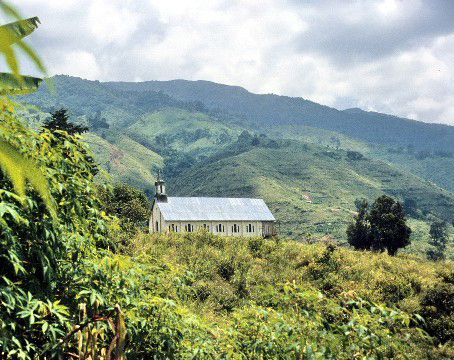Before Africa had road networks, hospitals, shops, or other conveniences, Magdalon and Kezia Lind pioneered the Adventist work in the Toro Kingdom in Uganda.
The Lind missionary family moved from hot, dry Kakoro to the cool mountainous region of the Toro Kingdom in 1944. They first built a church and a dispensary at Kagorogoro on the Fort Portal–Kampala road in 1945 but continued looking for larger, more strategic property on which to construct the headquarters for the new mission station.
The Linds fit into the society in which they worked and behaved as if they were part of it. With his winning ways, Magdalon befriended the king of Toro, Rukirabasaija Sir George David Matthew Kamurasi Rukidi III. He asked the king to allocate a hill in Fort Portal for the Seventh-day Adventist Church as his father had allocated Kabarole hill to the Anglican Church and Virika to the Roman Catholic Church. Magdalon wanted to build the church headquarters, a hospital, a primary school, and a secondary school in the heart of the town of Fort Portal. The king appreciated the idea and took the proposal to his council. The king’s council refused the request because Fort Portal already had facilities built by two other Christian denominations as well as Islam.
The king told Magdalon that the Bakonzo people needed these types of facilities more than the urban dwellers in Fort Portal, who were already being taken care of by other religious denominations. The home of the Bakonzo people is Kazingo, located at the foot of Mount Rwenzori. The king allocated his own land at Kazingo to Magdalon. Here, Magdalon began preaching the gospel in June 1946. In October, he started constructing a church building and a two-grade school.
When the Bakonzo saw a white man preaching and interpreting the Bible, they admired him. They flocked from the mountains to attend church services. Others sent their children to school to learn how to read and interpret the Bible.
Magdalon received news that a white settler, Daniel Fredrick West, was selling his tea and coffee plantation. Magdalon contacted West and bought the land. This location at the foothills of the Rwenzori Mountains, about five miles south of Kazingo, came to be known as Mitandi Mission. After securing the land at Kazingo and Mitandi, the Linds remained at Kagorogoro until renovations at Mitandi were completed. In 1948, they moved from Kagorogoro to Mitandi, which became the new headquarters for the Rwenzori Mission Station of the Seventh-day Adventist Church.
Magdalon built a dispensary, where Kezia did a tremendous work as a nurse and physical therapist. Kezia frequently handled more than 100 cases per day. Those who could not afford to pay were treated for free. She traveled to various dispensing centers on the public bus. Kezia worked around the clock and was never paid for her service. She used the money she collected from patients to buy medicine and dispensary equipment.
At the school the Linds built at Mitandi, many young people from the region came to study. Many of the Bakonzo people were baptized at Mitandi and started going to school. Some of the students later served as pastors, church elders, lay preachers, teachers, health workers, university professors, and administrators in various parts of Uganda and abroad. Those who returned to their home areas established churches and lower-grade schools.
To the people of Rwenzori, Magdalon and Kezia were missionaries par excellence. The moniker “God’s Angel to Mount Rwenzori” says it all. The Linds prayed and ate with the Ugandan people regardless of their status or faith. They spoke local languages to reach out to people and visited them in their homes. They taught the people how to read and write before baptizing them. They encouraged them to buy Bibles and to use them in the baptism classes to learn Bible doctrines. To date, the people of Mount Rwenzori still recall the Lind family as part of their community because their actions spoke more than their words. Magdalon and Kezia Lind are remembered as models of Adventist preachers, teachers, and medical workers. Though they have now passed to their rest in Jesus, their work still speaks to thousands of people.




